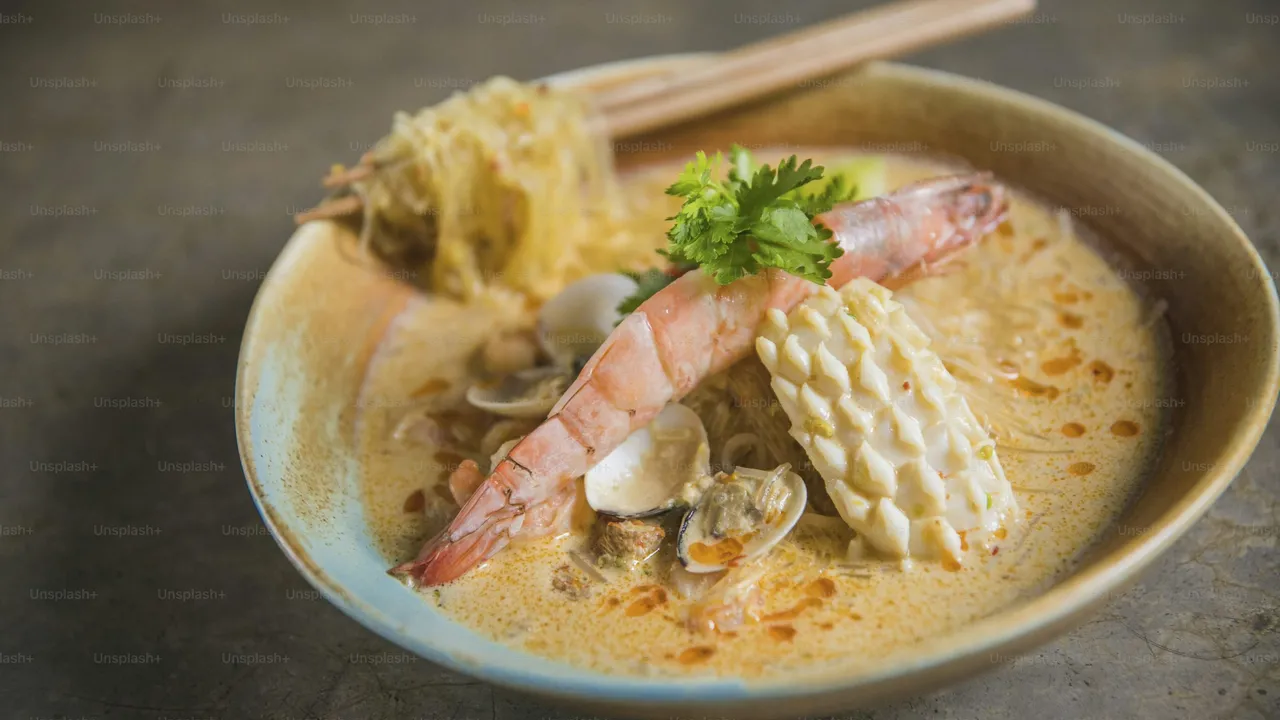Taiwanese Congee: Comfort Food at Its Best
Sample meta description.

Discovering the Delights of Taiwanese Congee A Culinary Journey
Hey foodies! Ever crave something warm, comforting, and utterly delicious? Look no further than Taiwanese congee! This isn't your average bland rice porridge. We're talking about a flavor explosion in a bowl, packed with savory ingredients and a texture that's just heavenly. Forget your preconceptions – Taiwanese congee is a serious contender for the ultimate comfort food crown. Let's dive into the wonderful world of this culinary gem, exploring its origins, variations, and why it deserves a spot on your must-try list.
The History and Cultural Significance of Congee in Taiwan Understanding Its Roots
Congee, or zhou (粥) in Mandarin, has a long and rich history in Chinese cuisine, dating back thousands of years. It's traditionally been a staple, especially for those with digestive issues, the elderly, or during times of scarcity. In Taiwan, congee evolved into a unique dish, influenced by the island's diverse culinary landscape. It's not just a simple rice porridge; it's a blank canvas for a myriad of flavors and ingredients. From humble street stalls to upscale restaurants, you'll find congee served in countless variations, each reflecting the chef's creativity and regional specialties.
Key Ingredients That Elevate Taiwanese Congee Beyond Simple Rice Porridge
What sets Taiwanese congee apart? It's all about the ingredients! While the base is typically a simple rice porridge, the additions are what make it truly special. Think savory preserved vegetables, tender braised pork, flavorful dried shrimp, crunchy peanuts, and fragrant fried shallots. Each ingredient adds a layer of texture and flavor, creating a symphony of taste in every spoonful. Some popular additions include:
- Dried Radish (菜脯): Adds a salty, umami punch.
- Braised Pork Belly (滷肉): Tender, melt-in-your-mouth goodness.
- Peanuts (花生): Provides a satisfying crunch.
- Fried Shallots (油蔥酥): Adds a fragrant, savory note.
- Pickled Cucumber (醃黃瓜): A refreshing contrast to the savory flavors.
- Century Egg (皮蛋): An acquired taste, but adds a creamy, pungent flavor.
- Fish Floss (魚鬆): Light, airy, and slightly sweet.
Exploring Regional Variations of Taiwanese Congee Finding Your Favorite Style
Just like Taiwan itself, Taiwanese congee is incredibly diverse. Different regions boast their own unique variations, each with its own distinct character. For example, in Tainan, you might find congee served with fresh seafood, reflecting the city's coastal location. In Taipei, you'll encounter more modern interpretations, with innovative flavor combinations and upscale presentations. Some popular regional styles include:
- Tainan Seafood Congee (台南鹹粥): A flavorful broth with fresh shrimp, oysters, and clams.
- Northern Taiwanese Congee (北部粥): Often features more preserved ingredients and a thicker consistency.
- Sweet Potato Congee (地瓜粥): A simpler, sweeter version often eaten for breakfast.
DIY Taiwanese Congee Recipe A Step-by-Step Guide for Home Cooks
Want to try making Taiwanese congee at home? It's easier than you think! Here's a simple recipe to get you started:
- Ingredients: 1 cup short-grain rice, 8 cups water, your favorite toppings (dried radish, braised pork, peanuts, etc.)
- Instructions: Rinse the rice and combine it with water in a pot. Bring to a boil, then reduce heat and simmer for about an hour, or until the rice is soft and the congee is thick. Add your favorite toppings and enjoy!
Feel free to experiment with different ingredients and flavor combinations to create your own signature congee.
Pairing Perfect Side Dishes with Your Congee Enhancing the Dining Experience
Congee is often enjoyed with a variety of side dishes that complement its mild flavor. These sides add texture, flavor, and variety to the meal. Some popular pairings include:
- Braised Tofu (滷豆腐): Savory and flavorful.
- Stir-fried Vegetables (炒青菜): Adds a healthy dose of greens.
- Salted Duck Egg (鹹鴨蛋): Rich and salty.
- Pickled Ginger (薑絲): A refreshing palate cleanser.
Where to Find the Best Taiwanese Congee A Guide to Local Eateries
If you're in Taiwan, you're in for a treat! Congee is readily available at street stalls, local eateries, and even some restaurants. Ask locals for their recommendations – they'll be happy to point you to their favorite spots. Some popular options include:
- Jin Feng Braised Pork Rice (金峰滷肉飯): Known for its delicious braised pork rice and congee.
- Yong He Soy Milk King (永和豆漿大王): A popular breakfast spot that also serves excellent congee.
- Any local breakfast stall (早餐店): You'll often find congee on the menu.
Congee Beyond Breakfast Exploring Its Versatility Throughout the Day
While congee is often associated with breakfast, it's actually a versatile dish that can be enjoyed any time of day. It's a great option for a light lunch, a comforting dinner, or even a late-night snack. Its mild flavor and easily digestible nature make it a perfect choice for any occasion.
Health Benefits of Congee A Nutritious and Easily Digestible Option
Congee is not only delicious but also surprisingly healthy. It's easily digestible, making it a great option for those with sensitive stomachs or digestive issues. It's also a good source of carbohydrates and can be a good way to stay hydrated. The added ingredients can provide a variety of vitamins and minerals, depending on what you choose to include.
Essential Kitchen Tools for Perfect Congee Every Time
Making congee is quite simple, but having the right tools can make the process even smoother. Here are a few essentials:
- A good pot: A heavy-bottomed pot is ideal to prevent scorching.
- A ladle: For serving and stirring.
- Measuring cups and spoons: For accurate ingredient measurements.
- A rice cooker (optional): Makes the process even easier!
Congee Around the World Comparing Variations and Cultural Differences
Congee isn't unique to Taiwan; it's enjoyed in various forms throughout Asia. From the jook of Hong Kong to the okayu of Japan, each variation reflects the local culinary traditions and ingredients. Comparing these different styles can offer a fascinating glimpse into the diverse food cultures of Asia.
The Art of Congee Making Tips and Tricks for Perfection
Making perfect congee is an art, and like any art, it takes practice. Here are a few tips and tricks to help you achieve congee perfection:
- Use the right rice: Short-grain rice is best for achieving a creamy texture.
- Don't be afraid to experiment: Try different ingredients and flavor combinations.
- Simmer gently: Avoid boiling the congee, as this can make it too starchy.
- Stir occasionally: This prevents the rice from sticking to the bottom of the pot.
- Add water as needed: If the congee becomes too thick, add more water to achieve your desired consistency.
Congee for Special Occasions Adapting the Dish for Celebrations
Congee can be easily adapted for special occasions. For example, you could add luxurious ingredients like abalone or scallops for a festive meal. You could also create a themed congee based on the occasion, such as a savory congee with turkey and cranberry sauce for Thanksgiving.
Congee and Food Allergies Adapting Recipes for Dietary Restrictions
Congee is a naturally gluten-free dish, which makes it a great option for those with gluten sensitivities. It can also be easily adapted for other dietary restrictions, such as vegetarian or vegan diets. Simply substitute the meat-based ingredients with plant-based alternatives, such as tofu or mushrooms.
Congee Delivery Services Bringing Comfort to Your Doorstep
In today's fast-paced world, convenience is key. Luckily, many restaurants offer congee delivery services, bringing this comforting dish right to your doorstep. Check your local delivery apps to see which restaurants in your area offer congee.
The Future of Congee Innovation and Modern Twists on a Classic
Congee is a dish with a rich history, but it's also constantly evolving. Chefs are experimenting with new flavors and techniques, creating innovative twists on this classic dish. From fusion congee with international flavors to deconstructed congee with modern presentations, the possibilities are endless.
Product Recommendations for Enhancing Your Congee Experience
Electric Rice Cooker Zojirushi NS-TSC10 Uncooked 5 5 Cup Rice Cooker and Warmer
Description: This rice cooker isn't just for rice! It's perfect for making congee with its dedicated congee setting. The non-stick inner pot makes cleanup a breeze. Features: Multiple cooking functions (including congee), keep-warm function, timer, non-stick inner pot. Usage Scenario: Ideal for busy individuals who want to easily make congee at home without constant monitoring. Perfect for families. Comparison: Compared to cheaper rice cookers, the Zojirushi offers more consistent results and a more durable build. Compared to Instant Pots, rice cookers often produce better textured rice. Price: Around $150.
High-Quality Dried Radish (Cai Po)
Description: A must-have ingredient for authentic Taiwanese congee. Look for dried radish that is golden brown and has a strong aroma. Features: Salty, umami flavor, adds a crunchy texture. Usage Scenario: Use as a topping for congee, stir-fries, or other savory dishes. Comparison: Some brands are saltier than others. Opt for brands with less sodium content if you are watching your salt intake. Fresh radish is NOT a substitute. Price: Varies depending on the brand and quantity, typically around $5-10 per package.
Lee Kum Kee Premium Oyster Sauce
Description: A secret ingredient for adding depth of flavor to your congee broth. Use sparingly! Features: Rich, savory flavor, umami boost. Usage Scenario: Use as a seasoning in the congee broth or as a dipping sauce for side dishes. Comparison: Compared to other oyster sauces, Lee Kum Kee Premium Oyster Sauce is known for its high quality and authentic flavor. Less expensive versions often have a fishy taste. Price: Around $5-8 per bottle.
Microplane Zester Grater
Description: Perfect for grating ginger or garlic to add a fresh, aromatic touch to your congee. Features: Ultra-sharp blades, ergonomic handle. Usage Scenario: Use to grate ginger, garlic, or other spices directly into the congee. Comparison: Compared to other graters, the Microplane Zester Grater is known for its efficiency and ease of use. Cheaper versions can be dull and difficult to clean. Price: Around $15-20.
Porcelain Congee Bowls with Lids
Description: Enhance your congee experience with traditional porcelain bowls. The lids help keep the congee warm. Features: Durable, heat-resistant, aesthetically pleasing. Usage Scenario: Use for serving congee at home or in a restaurant. Comparison: Compared to plastic bowls, porcelain bowls are more durable, heat-resistant, and aesthetically pleasing. Compared to other types of bowls, porcelain bowls are ideal for serving hot dishes. Price: Varies depending on the size and design, typically around $10-20 per bowl.
:max_bytes(150000):strip_icc()/277019-baked-pork-chops-with-cream-of-mushroom-soup-DDMFS-beauty-4x3-BG-7505-5762b731cf30447d9cbbbbbf387beafa.jpg)






